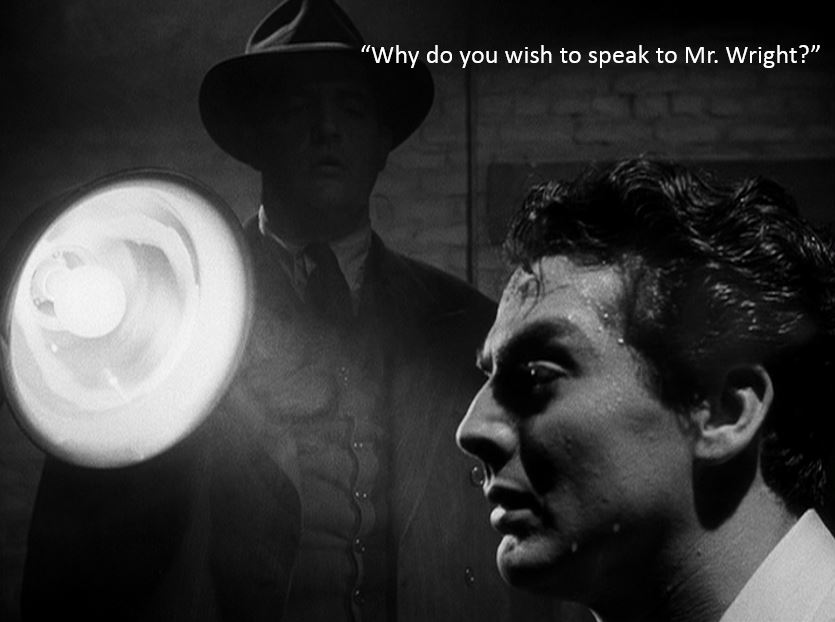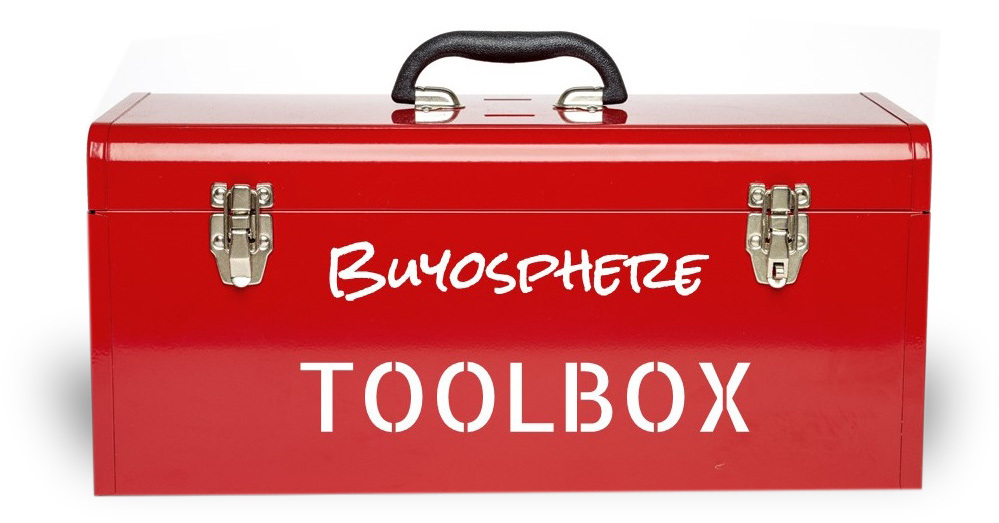We have all been in that "on hold" purgatory when calling into a business. We call, the phone answer-er answers, we tell them why we are calling, they put us on hold to transfer us to another person/department, we wait on hold for three minutes that feels like 30, another person picks up and we restate the question/problem, get transferred again, re-restate, on hold, rererestate, on hold, wash, rinse, spin. Eventually we get to the (W)right somebody.

Eventually.
We have a better way for businesses - a MUCH better proto-call for transfer calls - that we coach, teach, preach, beg, beller and holler at our trainees, and here it is:
The Buyosphere's 10 Best Practice steps for creating an exceptional soft transfer.
(A "soft," or "warm" transfer, comes from the idea of "gently" and carefully passing a customer's call into the hands of the correct person instead of dropping it into a dumpster and setting fire to it.)
1. Never ask, "How can I help you?" or worse, "Can I help you?" as part of your phone greeting.
"How can I help you" is improper grammar. I flunked out of college as an English major (twice) but this rule stuck in my head when almost nothing else ain't never did so trust me on this. Instead use "How may I help you?" That way you will sound smart to those who are educated and sound cool to those who are less so. And you will likely create a distinction between you and your competitors because most businesses use the improper "can" instead of "may."
"Can I help you?" is a closed-ended question, which means it requires a "yes" or "no" answer. It would be VERY strange for you or me to call any business, have them answer the phone with, "Can I help you?" and we respond with "no," and then hang up. "Can I help you?" implies you can't. The designated responsibility of the person answering the phone is to help the person calling in, and the assumed purpose of the person calling in is to seek help. So yeah, it is kind of nutty to ask that terrible closed-ended question.
Instead, use "How may I help you?" as the good/better/best/exceptional option. It is an open-ended question, which means it requires something more than a "yes" or "no" response. It shows a higher level of interest and engagement from the person asking it. And it requires more thought from the person being asked it. Win-win-win!
I am a bit of a stickler on this point and always try to practice what I preach. However, as much as I remind myself to present all questions to my trainees and Buyosphere coaches in an open-ended form, I don't always remember the reminder. "Does anybody have any ques-...I mean, what questions do you have?"
(Read more about the power of open-ended vs. closed-ended questions in another post.)
2. Be pleasant, kind and happy when you answer the phone.

Yeah, like that.
Start as you mean to finish. So start happy, and the relationship with the caller will be more likely to end that way. Make them hear and feel your smile over the phone. This will put the caller into a happy(er) frame of mind and it will buy you more forgiveness in the event the caller falls through the safety net created by these steps and someone ends up on hold for an extended period of time. (Understand that in these immediate gratification short attention span theater times of the 21st century, "extended period of time" is anything over 1 minute. Seriously.)
3. Ask for the caller's name.
Some people (employees and customers calling in) find this intrusive. I understand that, but I think the huge reward outweighs the slight risk. The two people in the conversation are usually complete strangers. So what better way to break the ice than to be on a first name basis! Plus it is much easier to keep track of someone on hold if you know who the someone is. Plus plus, the more you personalize your initial interaction with the caller, the harder it is for (most of) them to become upset if we do happen to drop, or to stay upset if they called in that way.
4. Do not grill the caller about the purpose of their call.

Callers call businesses to find someone to answer a question and/or solve a problem. Anyone who helps them get to that problem solver is a vital part of the solution. What is not vital is for anyone other than the actual problem solver to know the purpose of the caller's call. "What is this in reference to?" or "What is the purpose of your call?" is about as off-putting and meaningless as asking the caller how much they weigh. Callers (W)rightfully want to react defensively to the question. "That's none of your business." The answer to the "Why are you calling" question isn't going to help the person asking it, solve the problem, since they aren't the designated problem solver in the first place. If they were, they wouldn't be transferring the call.
Many owners and managers will ask their employees on the "front lines" to ask the "purpose of your call" question to screen out sales and vendor calls. I get it. People in management/ownership positions are very busy, and want to be productive and make the best use of their time.
Most reputable sales people will state the purpose of their call - or at least the company they are with - up front, which then triggers the employee to either send the caller into the owner/manager's voice mail, or direct them to send the owner/manager an email.
Some sales people aren't always honest and don't always play nice. Callers that are actual customers should not have to pay the "filtering the call" price for the actions of a few bad sales rep or vendor apples. Everyone who works for a company, represents that company, and they represent it to everyone - customers and salespeople and vendors alike. it is worth a few "wasted" minutes listening to a sales pitch in return for not running the risk of insulting the very people who call in seeking answers and solutions.
5. Ask permission to put the caller on hold.
Never tell the caller, "I am going to put you on hold." Or worse yet, just toss them into the black hole of on hold space without any warning. Never assume they will be okay with you putting them on hold. There are a lot of reasons why people don't want to be put on hold, and lots of alternatives for them, including taking a message and their contact number.
Instead, get their permission. "Would it be okay if I put you on hold?" That question demonstrates that you value their time and seek their buy-in. Plus it is beautifully old-school.
6. Give the caller a specific expectation of how long they will be put on hold, and commit to monitoring until someone picks up.
This one is tough, but absolutely necessary. When someone says to us, "I'm going to transfer you to..." we often have a hard-wired primordial reaction of despair. We've been there, done that. We have read the book, seen the movie and bought the action figures (sold separately).
You can turn despair to delight by telling the caller, "I am going to put you on hold and monitor the line. If no one picks up after about 15 seconds, I will pick back up." Customers will love you.
Just remember that time is a promise, which means you have to live up to it, which means you have to...
7. Baby-sit the call.

If no one has picked up after 15 seconds, pick up the line. Don't transfer a second time. Take a message.
The absolute worst customer calls we have ever heard, and played, in coaching sessions are the calls that involve multiple transfers. Want to turn an otherwise happy customer into a 1/2 star Google review nightmare? Put them on hold more than once. I have heard single "on hold/transfer/on hold/transfer calls that lasted 13, 14, even 20 minutes because no one saw the big picture.
For "normal" business interaction, the goal is to get the caller to their destination as fast as possible, and You can make the picture much smaller by taking a message after the first unsuccessful on-hold/transfer attempt. I would not ask, "Would you like to continue to hold?" That is like the proctologist asking, "Would you like me to continue to probe?" Take a message, get their contact number and name, tell them you will give the message to their intended target, thank them for calling, hang up (gently), free up a line and everybody gets to move on with their life.
(Note: When calling government agencies, all of those "quick and efficient" call handling expectations get tossed out of the window. A call into the IRS, for example, will likely generate an on hold time equal to or greater than the gestation period for your average Emperor Penguin. The Jonnie/IRS on hold record is nearly three hours.)

8. When picking up a call that you have put on hold - or that someone else has put on hold for you - immediately thank them.
Here is what not to say:
"Are you still there?"
"Still with me?"
"(Name of caller)?"
"I don't know where they are and why they aren't picking up."
The first, second and third responses suggest you lost the caller. (Hey man, where'd ya go?) The fourth response suggests you lost the employee. That is about you and your problem, which doesn't give the caller any room to make it about their problem.
The best way to pick up a caller on hold is to say, "Thank you so much for holding, (name of customer)." Don't apologize for their wait time (unless you know they had to wait three hours). Remain positive, and focus on the solution.
9. If they are calling for a specific person and that person is not available, tell them that - and nothing else.
From the "too much information" department come these actual statements made by employees to callers:
"He is in the bathroom and not in his office."
"She is in surgery this week but should be available next Tuesday."
"I think she stepped out for a cigarette break. Do you want her voice mail?"
"He tripped and fell and went home for the day."
"I'm not sure where he is. He never tells any of us where he is going or when he is coming back."
The caller doesn't care about and does not need to hear about the obstacles that have taken the employee away from their desk and rendered them indisposed.
Our coaches ask trainees: Do you want to be the Wizard of Oz or the fat old stammering guy behind the curtain? Do customers want Emerald City or the black and white tornado-ravaged Kansas that stepped outside for a smoke?
Lead them there.
10. Take ownership.
If you take a message for someone, create a specific expectation of time for a return call, and then make sure you follow up with that employee to make sure they deliver on your promise, on time.
This is very difficult but vitally important. You have to be able to write checks that others can cash, Telling someone that someone will "get back to you today" is setting you and your company up for failure. Good business is about delivering results. Great business is about delivering results now. Do not leave things up to chance. If you don't give consumers a specific time expectation, they will create one themselves, and you won't like it.
Great phone skills require creating a specific process, training people to learn it, motivating them to master it and holding them accountable to using it, every day. Mastering an exceptional soft transfer process will help you turn one of the biggest customer pet peeves into one of your greatest competitive advantages.
We can help you with that.

Jonnie Wright is President and CEO of The Buyosphere and Buyosphere University, a customer service training company and program that helps employees achieve customer service exceptionalism.
Contact him at jonnie@thebuyosphere.com.

Open The Buyosphere Toolbox to get FREE exclusive access to proven tools that will help you generate higher shop sales and profits - delivered weekly, right to your inbox!

